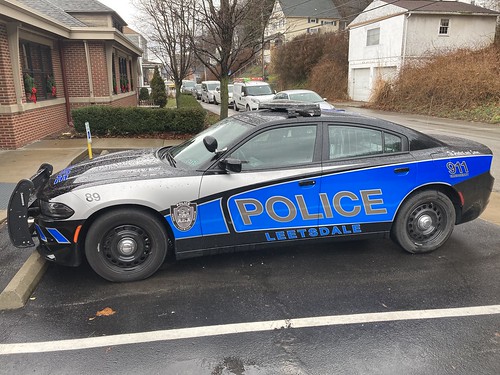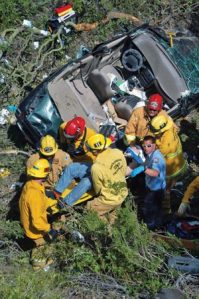It’s been gnawing at me that over 6 months have elapsed since my last post, but it seems that I can’t step away from other responsibilities, reduce other demands on my time, or set aside enough time to write.
What I did do was what I always do, sometimes to distraction, other times to fascination and enlightenment – observe, monitor, and in one instance, participate – and now I get to report…again.
That I am finishing this post from a hospital bed is proof enough that changes are afoot – literally and figuratively.
On with the show, such as it is…
Watson Campus Developments Spur Community Memories, Recognition Effort

Dedication of the D.T. Watson Home state historical marker, October 19, 2018. From left: Harton Semple, President, Sewickley Valley Historical Society; my wife Leslie and I; Barry Bohn, CEO, Watson Institute; and State Rep. Rob Matzie (D-Ambridge). Watson Institute – Lisa Falk
In July 2017, my attention was drawn to news reports announcing the construction of a new rehabilitation facility on the HealthSouth campus in Leet Township, to be owned and operated jointly with Heritage Valley Health System. This construction has been well underway for some time – along the way HealthSouth merged into Birmingham, Alabama-based Encompass Home Health to become Encompass Health. This has resulted in yet another name change for this historic facility.
With the knowledge that this existing building had once housed the former D.T. Watson Home for Crippled Children (now the Watson Institute), I had a conversation with Harton Semple, President of the Sewickley Valley Historical Society, concerning the Watson Home, its historic significance, and how that might be properly commemorated.
Armed with some basic research and the encouragement of Mr. Semple, I began collecting information to address the nomination requirements of the Pennsylvania Historical Marker Program. These markers are designed to recognize subjects, locations, or events that “had a significant impact on its times, and has statewide and/or national, rather than local or regional, historical significance”.
In the immediate Quaker Valley area, there are two other state markers; one in Edgeworth honoring composer Ethelbert Nevin, and the marker at the Harmonist settlement at Old Economy in Ambridge. With Leslie’s help I was able to get a comprehensive application packet submitted by the December 1 annual deadline.
After receiving the news in March 2018 that the marker had been one of 18 approved that year, work began on getting the marker funded (no state funding is budgeted for this), and address the legal and procedural issues related to placing the marker and dedicating it. Both the Watson Institute and the Sewickley Valley Historical Society made the commitment of financial and human resources to make this happen during the 2018 calendar year. The marker was dedicated at a small ceremony on October 19.
The placement of this marker is admittedly a small feat when compared to the possibilities and realities that were leveraged decades ago to eliminate the fear and suffering brought about by polio.
The marker commemorates those who made the seemingly impossible a reality –
- The extraordinary generosity of a man and his wife.
- The painstaking effort of those who toiled to provide care, education, and rehabilitation to the victims of polio, as well as those who sought to conquer it, and worked together as scientists to accomplish that end.
- The willingness of a community to step forward, and whose participation played an essential role in achieving that goal.
Recent news reports indicate that there are new challenges to the health and well-being of our children, whether by an uptick in cases of a rare malady that mimics the symptoms of polio, or by the resurgence of old diseases in places where concentrations of parents have declined to vaccinate their children.
For me, all I need to know about the credibility of the anti-vaxxer movement can be answered by the actions taken by physicians, parents, and children in our local area over 60 years ago. The lessons learned from those whose accomplishments helped to conquer polio will serve us well when addressing these and future challenges to our society’s quality of life.
It’s a rare thing for a community to be able to look at a specific time or place in their history and say that the world was changed for the better because of it. I’m grateful to have been able to participate in recognizing such an achievement in a permanent, visible way.
Sudden Departure, Slippery Slopes in Sewickley
The nearly 25-year tenure of Kevin Flannery as Manager of Sewickley Borough was, by my limited recollection, a distinguished one. Mr. Flannery began his tenure in 1993, around the same time I was dispatching part-time for several local police departments, including Sewickley.
Upon my return in 2011 after 16 years out west, Mr. Flannery was still in Sewickley. He had, from my vantage point, firmly established some administrative processes that led themselves to enhancing the accessibility, accountability, and transparency of local government.
Examples include leveraging the PEG channel on local cable TV with informative programming of local interest – I remember a particularly interesting program on Sewickley’s sewage treatment plant – and taking a leadership role in multi-agency coordination with the planning of numerous community events, which included the inexplicably thorny business of Landing Zone procedures. He also established the borough’s online presence, which is a comprehensive example of effective information distribution about a community and its government.
 So after 25 years in a position not known in many places for lengthy tenure, it wouldn’t be surprising to see Mr. Flannery want to step away from a distinguished career and take it easy for a while. Within a month, however, Mr. Flannery was reported to be back at work as the interim manager in Oakmont, which he then concluded at the end of last year to become Hampton Township’s Director of Community Services.
So after 25 years in a position not known in many places for lengthy tenure, it wouldn’t be surprising to see Mr. Flannery want to step away from a distinguished career and take it easy for a while. Within a month, however, Mr. Flannery was reported to be back at work as the interim manager in Oakmont, which he then concluded at the end of last year to become Hampton Township’s Director of Community Services.
Is it possible that Mr. Flannery found it necessary to leave Sewickley before he was ready? His accepting other employment immediately post-retirement would certainly suggest this. The borough’s operations have also seen their share of change, tumult, and controversy over the last year or two – witness the Zamagias Condominiums / Character Matters controversy, the resurrection, death, and re-animation of the Parking Authority, the withdrawal from the Quaker Valley COG, and perhaps most telling, the commencement of negotiations to move sewage treatment to Leetsdale.
Council President Jeff Neff is quoted by the Sewickley Herald that the current borough council “is a new council with new insight”. It’s a good question as to whether they also felt the need for new insights in management.
President Neff also alluded to the need for effective succession planning (which seemed painfully absent here) when speaking to the Herald in mid-March about the two women hired to assume oversight of day-to-day borough operations. The coming weeks and months will likely see reorganization anew, as Marla Marcinko and Erin Sakalik begin their duties as Manager and Assistant Manager respectively.
One item on what is likely a long list of processes to be evaluated concerns the borough’s response to the excavation and construction of a driveway as part of the redevelopment of properties along Hill Street and Hopkins Street, in what is known as a Natural Resource Protection Overlay zoning district.
The Sewickley Zoning Ordinance defines this designation as “intended to mitigate potential hazards, prevent potential impacts on the region’s water and stream quality and protect private property from potential damages that may occur due to the uncontrolled development of lands with sensitive natural resources”. This includes the steep slope that the neighborhood is built on.
This ongoing controversy involves not only the borough’s code enforcement and monitoring of construction activity, but also the manner in which the borough conducts business, and documents the activities of its ancillary boards and commissions.
I’ll have much more about this issue in the weeks ahead.
Fetterolf First Amendment Foray Fizzles – Future Forthcoming
In my post of last September, I detailed the ongoing zoning dispute and litigation between Sewickley Heights Borough and the owners of Dundee Farm and Fields on Scaife Road. This became more than just your average zoning issue because the owners, Scott and Theresa Fetterolf, elected to play the First Amendment card in Federal court, asserting that the borough’s attempts to curtail the use of their property for various activities without the required variances violated their rights to the free exercise of their religious beliefs.
Late last October, U.S. District Judge Marilyn J. Horan ruled that she was having none of that without the completion of the local zoning appeal process first. Her order dismissing the case1 states in part:
The matter of the notice of violation issued by the Defendant concerning the zoning matter at issue is presently pending proceedings before the zoning hearing board. A final decision from that board has not yet been issued.
According to Borough Manager Katie Stringent, that decision is scheduled to be announced at a public meeting on April 25. The published meeting notice seems to make a point of stating that “the Board will also consider any other matters that come before the Board” and “The public is invited to attend and participate.” Considering the comments from nearby residents that were reported in the Herald of November 8, it’s possible that the session will be a lively one.
1 – Fetterolf v. Borough of Sewickley Heights, U.S. District Court for Western District of Pa., PACER
Consolidation Conversation Intensifies
The fallout from the result of the Michael Rosfeld trial in March, while somewhat predictable given the nature of state law as it pertains to the use of force, has nonetheless caused a ripple effect in the civil courts, newsrooms, and municipal halls across the county.
Last December the Post-Gazette focused much attention on the inequalities and fragmentation resident in the overwhelming number of independent municipal police departments in Allegheny County – the most of any county in the state.
Along with the December dissolution of the East Pittsburgh Police Department, they and three other neighboring municipalities have requested an evaluation from the state as to the feasibility of consolidating their departments into a single police force.
These evaluations don’t always turn out the way you might think, depending upon the priorities established by the stakeholders involved. The four communities in the lower Allegheny Valley that requested the same evaluation got the report back stating that consolidation wasn’t feasible without significant layoffs – something that the towns involved didn’t want.
Here in the Quaker Valley, the possibility of a significant tax hike to pay for a new high school may force local municipalities to re-evaluate those parts of their operations that take up the largest portion of their budgets. Police protection is often at the top of the list.
Studies of police consolidation invariably have a political as well as fiscal component associated with them. One recommendation that I have read in the past is that tying a consolidation to the retirement of one or more of the incumbent leaders can often help to smooth the transition. The announcement in March of Leet Township Police Chief William Wanto’s upcoming retirement could represent an opportunity to begin discussions.
Leet, Leetsdale, Bell Acres, and other area police work together on a routine basis. Why should these expensive and essential resources be administered by multiple separate entities?
We can do better, or at least should take a serious look to see if we can.
I’m hopeful that there are municipal officials that consider efficiency and fiscal responsibility as truly desirable and attainable goals.
Related Court Activity
In my last post I reported on the slaying of Leetsdale native Dulane Cameron Jr. outside a bar on Pittsburgh’s North Shore. The suspect, Joden Rocco, is still incarcerated pending trial. Allegheny County District Attorney spokesperson Mike Manko stated this month via e-mail that the “case is currently on appeal. I have no other timetable for it at this point”.
Another local connection to the unrest last summer is the charges filed against Bell Acres councilor Gregory Wagner for allegedly striking protesters with his Mercedes, also on the North Shore.
According to online court records, most of the charges against Mr. Wagner were held for trial. A pre-trial conference is scheduled for April 18.
God Bless You, Mr. Fetterman
The above graphic from the Post-Gazette showing the Mon Valley towns discussing police consolidation has a big hole where Braddock Borough should be. Regardless of the reasons for this, those with statutory authority over the police department there need to be proactive about this as much as their neighbors seem to be.
The interesting thing about this is for 14 years up until this past January, that person was the Mayor of Braddock, John Fetterman, now Pennsylvania’s Lieutenant Governor. According to Wikipedia, “The position’s only official duties are serving as president of the state senate and chairing the Board of Pardons and the Pennsylvania Emergency Management Council”. The position of Mayor in Pennsylvania is similar, in that a mayor’s primary responsibility is oversight of the police department.
Mr. Fetterman has distinguished himself as a community activist and booster for the Braddock community. He is fortunate to be of sufficient independent means to be able to focus on those ideals while pursuing his activism and political office. In some ways he reminds me of Eliot Rosewater, a character in at least one Kurt Vonnegut novel.
As someone who considers public safety and emergency management as the most critical services that a government can provide, I can’t help but think he may have left the police department to its own leadership, rather than encourage innovation and efficiency during his tenure.
I’m hopeful that Mr. Fetterman will aspire to all of his new duties with the same passion and energy as he did as a community activist in Braddock. Unfortunately, I can’t help but think that he may instead use the office as a bully pulpit – witness the marijuana legalization listening tour.
I’m hopeful for Mr. Fetterman’s success, but perhaps more hopeful for Tom Wolf’s continued good health during his second term.
Leetsdale – The Fires Next Time
When the Lubrizol Plant burned in November 2015, the safety contingencies in place for residents and employees within Leetsdale’s industrial district came under public scrutiny and comment – and rightly so.
Review of recent Leetsdale council minutes shows that conversations are still taking place to possibly restore an existing bridge over Big Sewickley Creek between Port Ambridge Industrial Park and the Hussey Copper property, for use as a secondary evacuation route.
 As it happens, Hussey’s interest in this may be bolstered after three significant incidents at the plant last fall, requiring a considerable public safety response.
As it happens, Hussey’s interest in this may be bolstered after three significant incidents at the plant last fall, requiring a considerable public safety response.
The first incident occurred on the evening of September 28, when according to Cochran Hose Company reports a “malfunction in the rolling process caused several motors and grease in the exhaust system to catch fire…Extended cleanup due to grease and debris.”
According to Leetsdale fire officials, Hussey paid to have several sets of firefighter protective gear from several local departments get specialized professional cleaning due to soiling from the suppression efforts and overhaul.
Four days later on October 2, fire crews returned to Hussey for a “working fire found in an electrical room off the main work area with extension up the exterior wall and roof of the plant“.
Finally on October 21, an overspill of molten copper required fire units to assist with cooling it down so that the company could start the cleanup process.
KDKA-TV reported the first and second fire incidents, and were the only local media outlet to report anything at all about these occurrences.
This is further evidence of the continued deterioration of local news reporting by the traditional mainstream media.
Some stories like the fires at Hussey are of interest to the community at large, and speak to significant issues that have consequences for multiple stakeholder groups.
One has to wonder what is next to fill the gap in local journalism that covers significant issues of importance to residents.
Best wishes for a tranquil transition to mid-spring.





































Pingback: Loose Ends For a Better Year, Part 3 – Nothing New Under the Sun | John Linko
Pingback: Loose Ends For a Better Year, Part 3 – Nothing New Under the Sun | John Linko